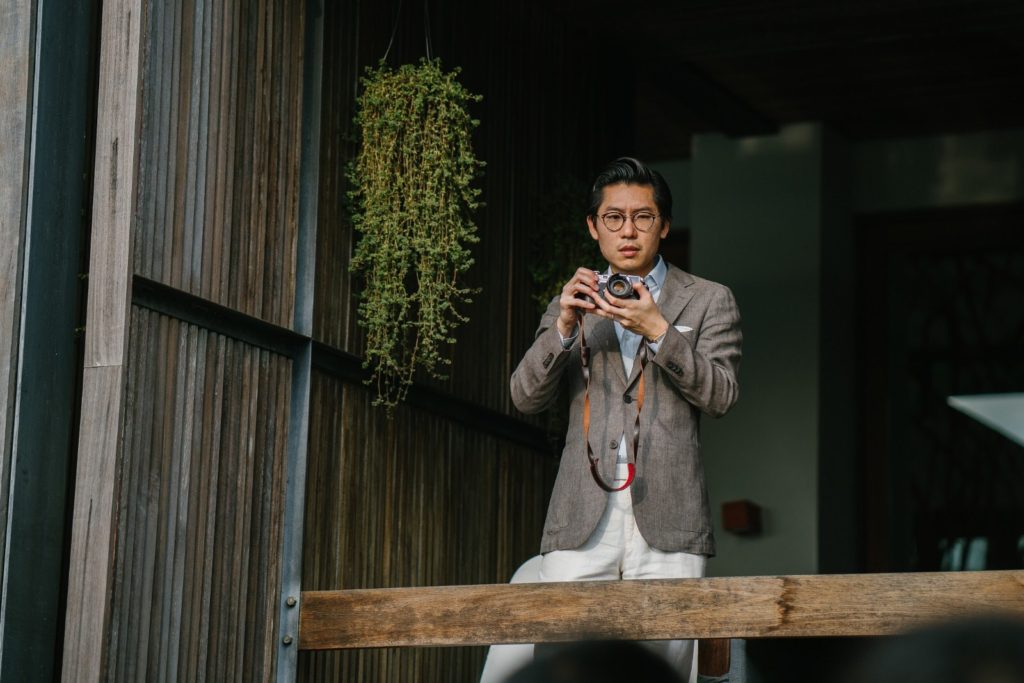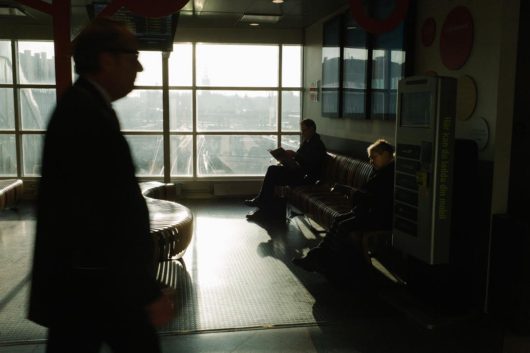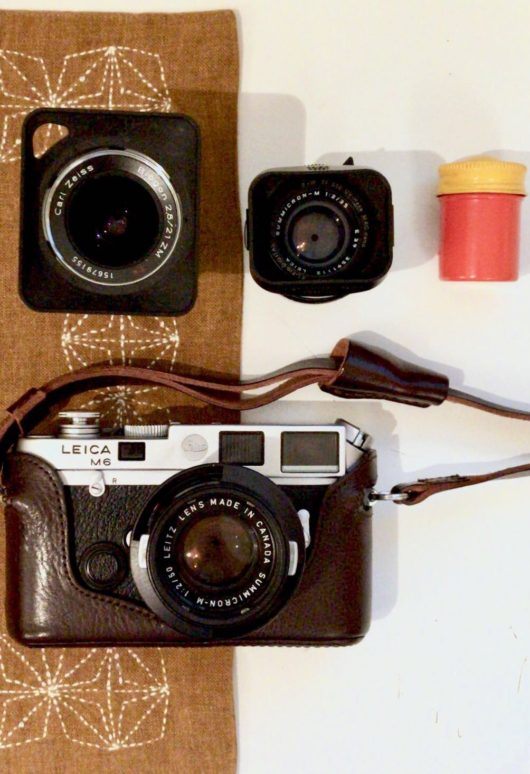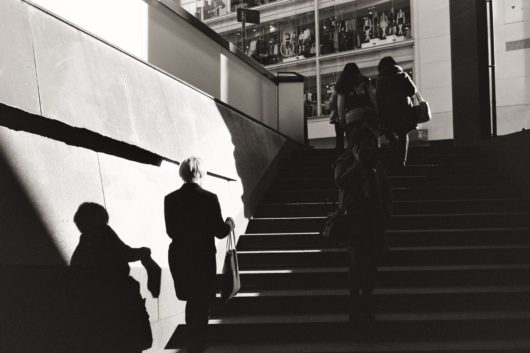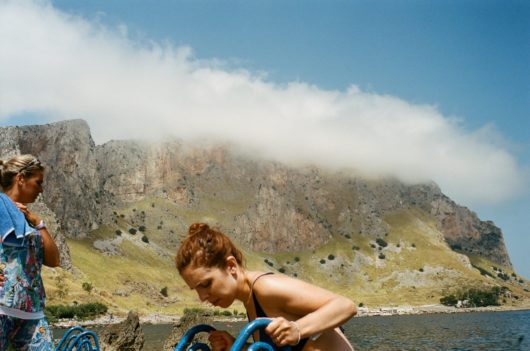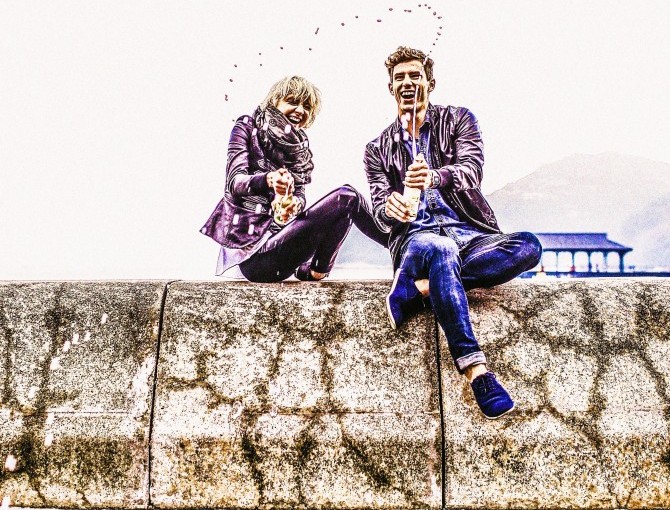Once again, we have another photographer on board for our interviews, but with a different style and a different perspective towards this medium. Paul Tan has always been passionate about all things vintage, and has used this style to define his own photography works. In this interview, Paul shares his perspective on where vintage photography is going, where he thinks is the best place to shoot street photography, and tips on how to improve our photography skills.
Tell us about your life story.
I’m from Singapore, currently in my early 30’s, and working in finance, specifically forex trading, in Hong Kong. I love football and also grew up learning music so I naturally have a creative inclination and like to do creative things. Since my current job requires a different skillset rather than creativity, photography provides me an outlet for this, and Hong Kong is a great city for photography.
Any anecdotes in your life that you don’t mind sharing?
I once left my cameras and camera bag on a beach in South American called Copacabana thinking that it would be safe, and that I could come back to retrieve it in a few minutes. As you can probably guess, all my cameras and camera bag got stolen. This got me depressed and made me give up photography for a long time, at least a couple of years. When I decided to get back into photography, I became even more serious about it.
What got you into photography in the first place?
I bought my first lomography camera when I started working cause I thought it was cheap. It was something I bought from eBay. I started playing around with it and learning about how to use this tool. As vintage cameras can be quite cheap, I started buying a bunch, including the Olympus OM-1, which is considered a classic camera, and that’s how I started shooting film. To boil it down, I started film photography because it was cheap.
Why do you prefer vintage?
I shot with digital cameras before, but when I first got into film photography, it felt more like an art than digital photography; it felt more organic. There’s no software involved in film photography, just film, chemistry, and mechanical tools. In fact, vintage cameras can last for a long time as there is no circuitry involved; it’s simple, and they don’t break down like digital ones. Digital cameras don’t last the distance – once they break down and once the manufacturer stops producing the parts, the camera is essentially dead. On the other hand, a lot of vintage cameras can survive for a very long time. It’s like comparing an apple watch with a mechanical watch; you’d be lucky to have the apple watch survive for 20 years unless you maintain it really well, but a mechanical watch can last for a very long time as long as you tune it once in a while. I find it fascinating to be using a mechanical tool today that is from the past. I find it kind of romantic that these vintage cameras have been around for long periods and important time periods of human history, capturing for example war photos and other photos that have defined human history – the fact we can use these same vintage cameras to take modern day photos makes this very fun.
When purchasing cameras, what do you look for?
When I first got introduced to photography, I played around with lomo cameras, which were instant cameras – they weren’t very technical. As I started to research into the field, I started discovering all the cameras I could pick from, such as SLRs, rangefinders, TLRs… there’s so many different kinds, and I went through a trial and error process to find the style of photography that I like the most. I would go online, read about it, find random cameras to buy it and test it out to see if I like it. Currently, I like to use rangefinders, which are not that common as most cameras are digital SLR. I’m also at the stage where I’m happy with the gear that I have, and instead I’m looking to improve my ‘eye’ for photography, whereas most people will keep buying new gear without actually using the gear. I had a period where I did collect a lot of gear too initially, especially during my trial and error process, but now I’m happy with what I own and am just looking for inspiration and to further improve my skills.
Do you see vintage photography making a comeback or is it fading?
It’s really hard to say whether it will make a comeback or whether it will start fading. I feel like human beings today care about convenience more as nowadays people don’t have time to process film or print photos. Nowadays we post our photos on Instagram whereas before, each time you shot you would print the whole row as there was no way to scan the photos before.
People realize that digital cameras can provide a lot of convenience, but as things change such as technological improvements to screens, the resolution of a digital image will not look as good as before. If vintage photography does make a comeback, it will comeback as a niche. In fact, I noticed that the Star Wars director used large format film to achieve that vintage look and I thought that was very cool. What I’m trying to say is, in the creative world, vintage photography will still have its purpose, but in the retail world, it will still be digital.
On the other hand, vintage photography can be fading – as more and more people adopt to digital cameras, there’d be less and less people and companies wanting to cater to the film photography market. When that happens, processing becomes more expensive, there’d be less infrastructures available, and when things get depleted they become more expensive. The divergence from film photography is seen as we see companies like Kodak and Fujifilm stop producing many types of film.
It’s really hard to say whether the trend will actually become worse or not. On the one hand, magazines continue to use large format film because there’s no way to get the same effect from digital, yet technology is catching up to the point where it’s good enough to do similar to large format film. I’ve noticed that a lot of weddings increasingly use film because it gives an effect that cannot be achieved on digital.
I believe there can be an ecosystem for vintage photography, but whether it will become where it used to be, it’s hard to say, but I’m guessing it’s going to be very unlikely.
What is the process of processing your film photography?
Most of the time when I shoot black and white film, I will process the film myself. That means that I will buy the chemicals and do the chemical process at home. What that means is that I get to control the amount of agitation (how much you shake the mixture), the amount of chemicals, and the temperature settings – all these factors affect the creative impact on the output. Keep in mind this is for black and white film. By picking the film at the beginning and processing it yourself with your own chemical process, you can create your own signature style.
The next type of processing people would do would include dark room printing and silver gelatin prints so that they can really control everything from the start to finish. With digital, you take the photo and the camera photo software chooses the filter for you, or you can use photoshop and print it with a service provider, but the service provider has their own signature style, meaning that you lose artistic control; you lose the purest way of reaching photograph.
Nowadays in essence of time and with the availability of dark rooms, I send them to a lab and then I scan it with my scanner which I then post online.
What do you like taking pictures of, and why?
Street photography mainly because I was inspired by Magnum photos. Magnum photos are an exclusive group that is invited only for the best street photographers in the world.
I chose street photography because it’s very organic and you can make it to be whatever it is. Also, street photography has contributed to a lot to journalism; if you look at Magnum, most of the photos are about human history and human heritage and their photos have significance. With this in mind, you can see why there is a lot of garbage nowadays in terms of photography. That’s why I enjoy street photography – it’s reporting what human life is.
Where or how do you find inspiration?
Street is really everywhere and you can take anything, but the best would to be to find an issue you want to address or you want to portray and try to focus on it, like a societal problem. I haven’t thought of a theme yet I want to focus on at the moment, but I’ve been taking some aesthetically pleasing street photos with no real storytelling purpose.
What do you find most challenging about taking a good picture, and why?
For street photography, it’s not easy because you’re taking photos of people without asking their permission. Sometimes you have to go close and at the same time you don’t want to disrupt them in their natural habitat, so you have to be quick, especially with camera as you have to manually focus. That’s why it’s important to be technically very sound and understand how light works and how to use the camera to be as proficient as possible.
What has been your most memorable experience while doing photography?
My honeymoon trip with my wife was pretty memorable because we went to many places in Italy. There were a lot of material that caught my eye photography wise, and so I had a good time taking photos.
What are you looking to accomplish with your photography skills in the future?
I don’t want to become too commercialised but I want to eventually find something that means a lot to me or something valuable and make a photo book out of it.
How do you find the photography scene in Hong Kong or Singapore or elsewhere in the world? Where is your favourite, and why?
In terms of photography, I do think that Hong Kong and Japan are the top two in Asia, with the reason being that Hong Kong in general is a vintage loving city and they have a lot of camera shops and labs that still process film. There are a lot of dark room facilities so there’s a good ecosystem going on here in Hong Kong. Obviously in Japan, there is even more. Singapore isn’t too big into film photography.
Your biggest regret in your life that we can learn from?
No regrets. Pretty forward looking. What’s past is past.
Who are your idols or role models, and why?
Alex Webb, because he has a distinct style that I can really appreciate the beauty of his composition. They are very unique themselves and are very unique to street photography as well.
What’s one photography trick you can teach us that can improve our photography skills?
Get a proper camera and try to shoot in manual for a day and see what results you get. Try to understand why you’re doing what you’re doing with the camera and its settings.
Looking for more of Paul’s work? You can visit Tanno, his blog site, or his Instagram for more film photos.
